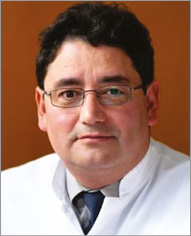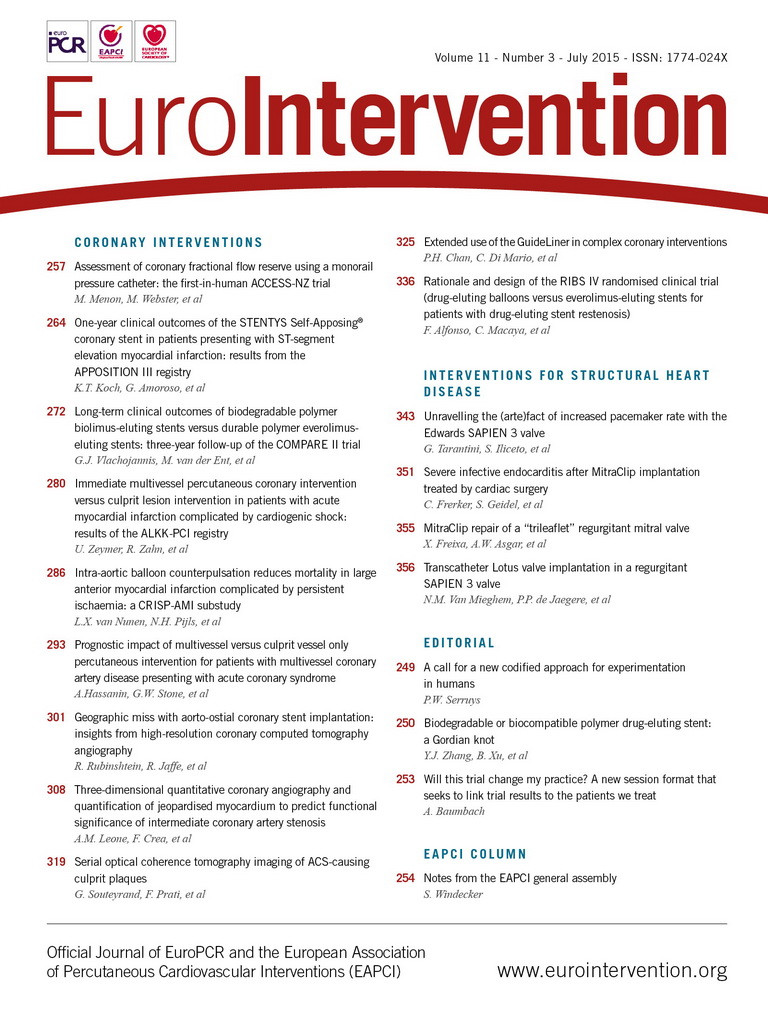NEWS
■ Visit CathGo at the new EAPCI website: an online database of centres offering interventional and research opportunities, visit today this EAPCI initiative to boost the mobility of Fellows and training across Europe!
■ EAPCI at the ESC: Hot topics in interventional cardiology 2015 session in Chisinau - Village 6, Sunday 30 August (16:30 -18:00).
■ Don’t forget to register today for the ESC Congress 2015, this year in London. Early Registration ends 31 July!
EAPCI Focus on the Interventional Cardiology Working Group of the Hungarian Society of Cardiology
An interview with the President, Béla Merkely
What does the EAPCI membership mean for a national society?
Our working group is actually an officially recognised association of the Hungarian Society of Cardiology with a long tradition of advancement of care in interventional cardiology. In 2003, we developed the Budapest model for primary PCI which was later rolled out to the entire country in 2009 with the result that thrombolysis is administered in less than 1% of AMIs. Thanks to our experience with primary PCI, we are involved in ESC/EAPCI’s Stent for Life project.
Through the EAPCI we also participate by co-hosting sessions every year at EuroPCR. This year’s session, co-hosted with Austria, took the form of a “How Should I Treat?” session.
What are the current issues related to the national society?
We have good relations with our Ministry of Health, and investment in healthcare is available as long as we can demonstrate the efficacy of a particular treatment. For example, over the last 15 years the rate of death due to AMI has decreased by 63%, which in real numbers is 8,000 fewer deaths per year. This is a positive outcome which is well known within the Ministry and which has led to improved funding in cardiology care.
Our next focus area is TAVI. At present we perform 15 implantations per million inhabitants per year, which is an acceptable level bearing in mind that we started in Hungary with 2 per million inhabitants. We are developing this activity gradually, and it will be some time before we reach the same level as the rest of Europe. Nevertheless, TAVI is now available for the high-risk patient.
In order to begin a new programme, we need ESC guidelines and major publications. For the Ministry of Health, we then have to demonstrate the local efficacy of a particular type of care before the treatment can be adopted nationally and, of course, reimbursed.
We have spent a lot of time devising our postgraduate education programme. In fact, we even have three distinct levels: beginner, middle and advanced. We are quite strong in coronary interventions; however, we are currently directing a lot of our energy into peripheral interventions as the number of interventions of this type is significantly lower than in the rest of Europe. Whilst there are some colleagues who can perform both types of intervention, this is still insufficient. We anticipate a growing need for peripheral experts as, for instance, amputation rates are significantly higher in Hungary than in the rest of Europe. We have to save these patients as well.
Looking towards the future, we hope to develop a mitral repair and replacement programme in our country. We are lucky that within Hungary a large number of good animal labs exist and that small companies are beginning to show an interest in this field in innovation right here in Hungary. We still have a long way to go before we can start.
Concerning registries and databases, we participate in the EURObservational Research Programme (EORP). For example, we are involved in the TAVI registry. For this type of registry only a limited number of centres in Hungary are involved: due to this small number, the quality of the data collection is more detailed. We do, however, collect our own national interventional data, but this is a centre-/site-based collection and not prospective. Nonetheless, we provide these data to the ESC. Finally, we are promoting Hungarian participation in more international milestone studies, such as the EXCEL left main study. Even though we are a small country with only 19 hospitals catering to 10 million inhabitants, almost all our centres have high-volume levels and certain provide high volume in non-coronary interventions as well.

Béla Merkely, President of the Interventional Cardiology Working Group of the Hungarian Society of Cardiology

President: Béla Merkely
Vice Presidents: Péter Andréka, Zoltán Ruzsa
Contact details: [email protected]
Working Group website: https://www.doki.net/tarsasag/kardiologia/info.aspx?web_id=&sp=330
Upcoming annual meeting: October 8-10, 2015 (Szeged, Hungary)
Founded: 1972 (HSC)
Members: 3,796 (HSC) 140 (WG)
EAPCI members: 35

